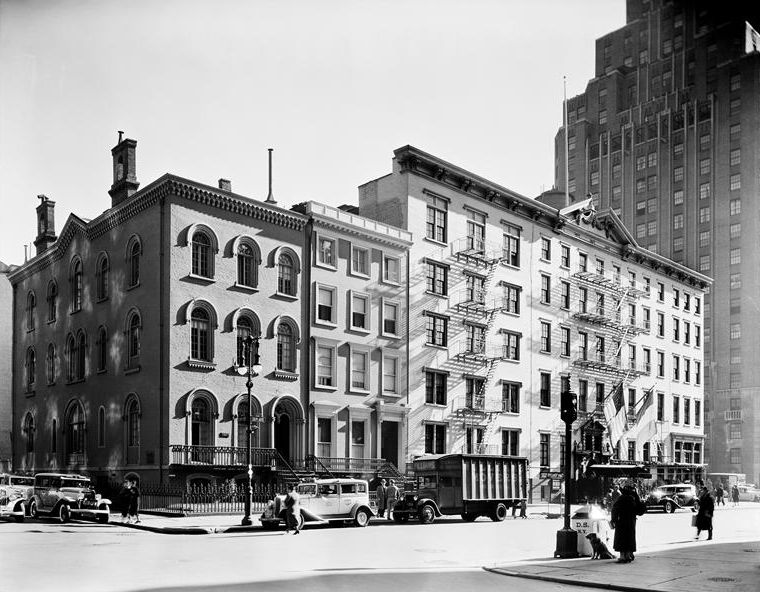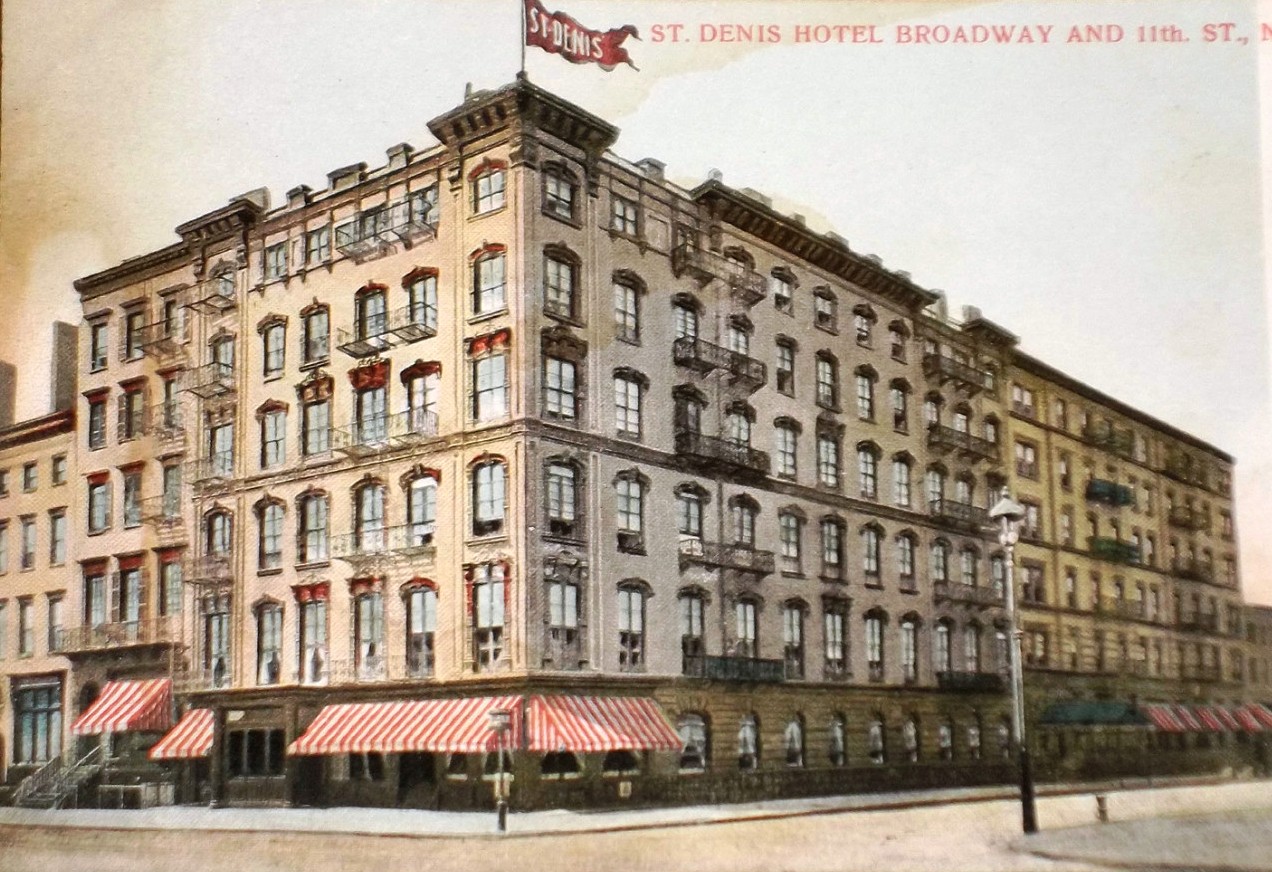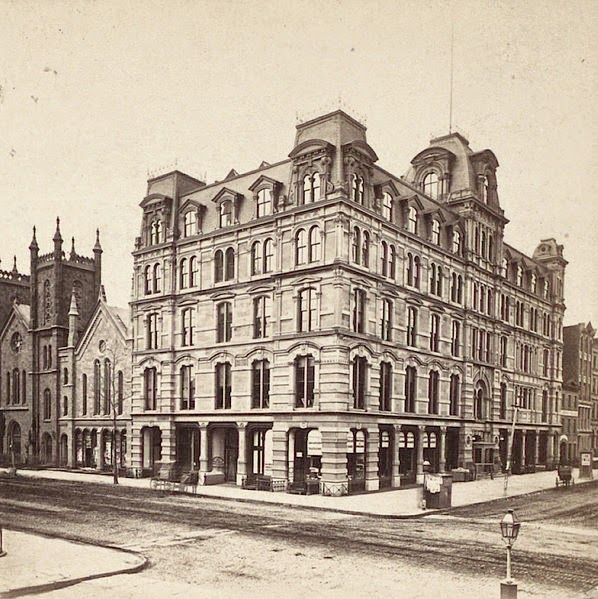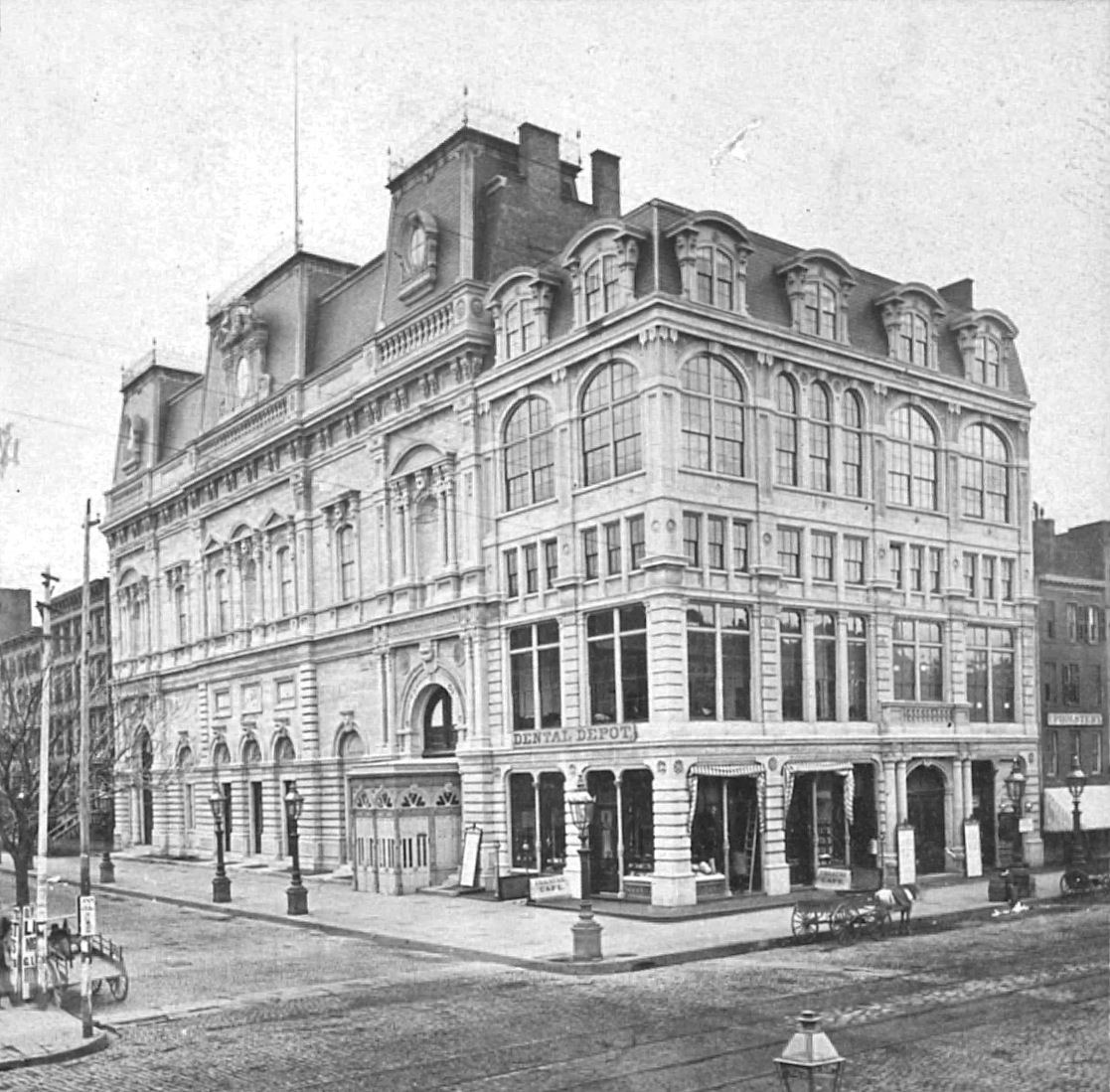Renwick: NYC Walking Tour
James Renwick, Jr. was a prolific American architect. His churches, apartments, theaters buildings, and community spaces scatter Manhattan. Some of his structures have been demolished, were ruined by fire, or were stripped to bare bones and built as something new.
Compiled here are Manhattan addresses and street intersections where Renwick buildings once stood (or still stand) today. Find the addresses and a very brief history of the buildings here. And look out for these buildings and sites when you’re next roaming the streets of Manhattan!
Downtown Manhattan
Downtown Renwick buildings (left to right): Mark Twain House (building on far left), Rhinelander Gardens, St. Denis Hotel
11 Wall Street, between New and Broad Streets
In 1885, Renwick completed the façade of the New York Stock Exchange. The New York Stock Exchange building still exists today, but the original Renwick façade was stripped and replaced with a new face.
Bowling Green
As a young engineer, Renwick completed a public water fountain in Bowling Green. Sadly, the fountain no longer exists.
21 Fifth Avenue, located between 9th and 10th Streets
In 1842, James Renwick, Jr. completed the Mark Twain House for the esteemed American writer. Sadly, the house was demolished in 1953. At this location is now the Brevoort apartment complex.
288 East 10th Street, located at Avenue A
The church located in this East Village neighborhood was completed in 1882 and was originally known as the Memorial Chapel of St. Mark’s in the Bowery. The building still exists and is now known as St. Nicholas of Myra Orthodox Church.
802 Broadway, located between 10th and 11th Streets
In 1843, Renwick, Jr. won a competition, at the age of 23, to design Grace Church. In 1847, Renwick went on to build the church rectory and in 1881, he built the Grace House. Both additions are a part of the Grace Church complex. The Grace Church Memorial House, located around the corner on Fourth Avenue between 10th and 11th Streets, was added by Renwick in 1882.
80 East 11th Street, located at Broadway and 11th Street
In 1853, Renwick completed the Hotel St. Denis, located at the corner of 11th Street and Broadway. In the 1920s, the building was stripped of all architectural details and turned into an office building that still exists today.
11th Street between Sixth and Seventh Avenues
In 1855, Renwick designed the Rhinelander Terraces housing units. The houses, which were known for their large front lawn-like spaces, were demolished in the 1950s. What exists now are apartment buildings.
Between Downtown and Midtown Manhattan
Renwick buildings that were once on 23rd Street (left to right): YMCA Headquarters, Booth's Theater
61 Gramercy Park South, at 21st Street
In 1848, James Renwick, Jr. completed the Parish of Calvary – St. George’s. The church still exists and is at located at Gramercy Park South and 21st Street.
23rd Street and Fourth Avenue
In 1869, the New York Young Men’s Christian Association opened its first headquarters, designed by James Renwick, Jr. and was located on the corner of 23rd Street and Fourth Avenue. Fires in the early 1900s destroyed much of the building and shortly thereafter the building was demolished.
23rd Street and Lexington Avenue
In 1849, Renwick, Jr. completed the Free Academy which was an integral part of the original downtown campus of the City University of New York. The university campus eventually moved uptown and the Free Academy building was demolished in 1927.
23rd Street and Sixth Avenue
In 1869, Renwick’s Booth’s Theater opened. It was located in the old theater district of Manhattan. The building was closed in 1883 and was demolished shortly thereafter.
151 East 28th Street, between Lexington and Third Avenues
In 1854, Renwick’s St. Stephen’s Church, was completed. The building has undergone small modifications since its completion but still exists today.
29 East 28th Street, between Madison and Park Avenues
In 1879, Renwick completed the St. Anthony’s Alpha Chapter House for Columbia University, when Columbia University was located in downtown New York. The building exists today but has been converted to apartments with a restaurant on the ground floor.
Midtown Manhattan
Fifth Avenue between 40th and 42nd Streets
In 1836, Renwick, Jr. began work as an assistant engineer on the original Croton Aqueduct. The aqueduct’s reservoir was once located on Manhattan’s Fifth Avenue. The Aqueduct was decommissioned in 1955.
Madison Avenue and 44th Street
In 1872, Renwick completed the St. Bartholomew’s Episcopal Church. The church later moved to a new location and the original Renwick structure was demolished shortly after the move.
Fifth Avenue between 50th and 51st Streets
In 1858 construction began of St. Patrick’s Cathedral. The cathedral is widely known as Renwick’s most esteemed commission and is open year-round. The building recently underwent a $175 million restoration.
Uptown Manhattan
47 East 129th Street, at Madison Avenue
In 1886, Renwick completed the Church of All Saints. The building still exists today.
Roosevelt Island
Southern tip of Roosevelt Island
In 1854, construction of the Smallpox Hospital began.
In 1861, Renwick completed City Hospital. The building was demolished in 1993 and is now surrounded by public parkland called Southpoint Park.
Northern tip of Roosevelt Island
In 1872, Renwick completed the Lighthouse, located on the northern end of Blackwell Island (now known as Roosevelt Island). The lighthouse was built by Renwick during his tenure as the supervising architect for New York’s Commission of Charities and Correction.






